User Stories
Scenarios: At the End of a Sprint on a Scrum Project, Which is Better, A or B?
13 April 2018
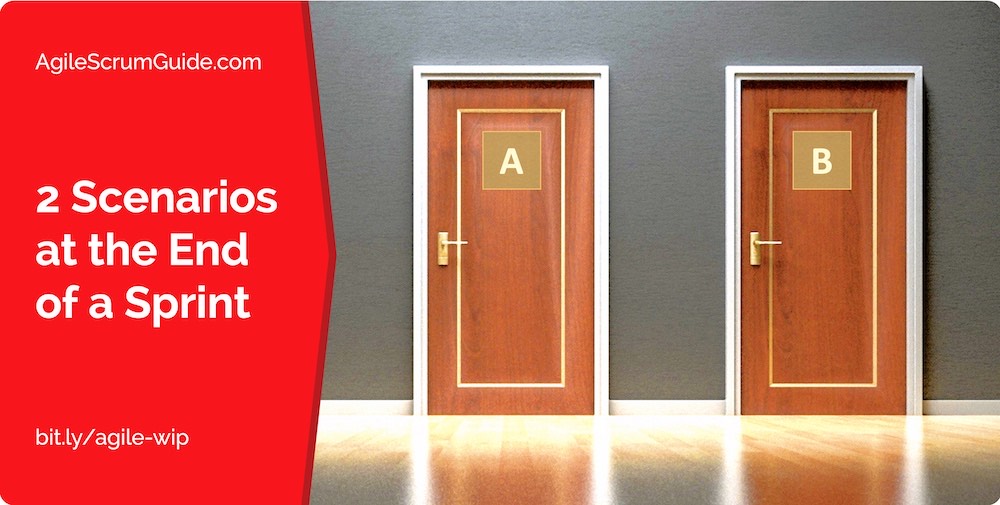

Agile Workflows

Scrum is the most popular agile development and delivery framework. In Scrum, the product backlog — sometimes referred to as the product/service backlog or the product release backlog — is simply a list work to be done. It may contain features, bugs to be fixed, or other requirements; and entries may take the form of user stories or other formats. The Product Owner is the ultimate holder of the product backlog. He/she prioritizes items, and different methods can be employed to help accomplish that work. This concise article highlights the technique of factoring business value and risk.
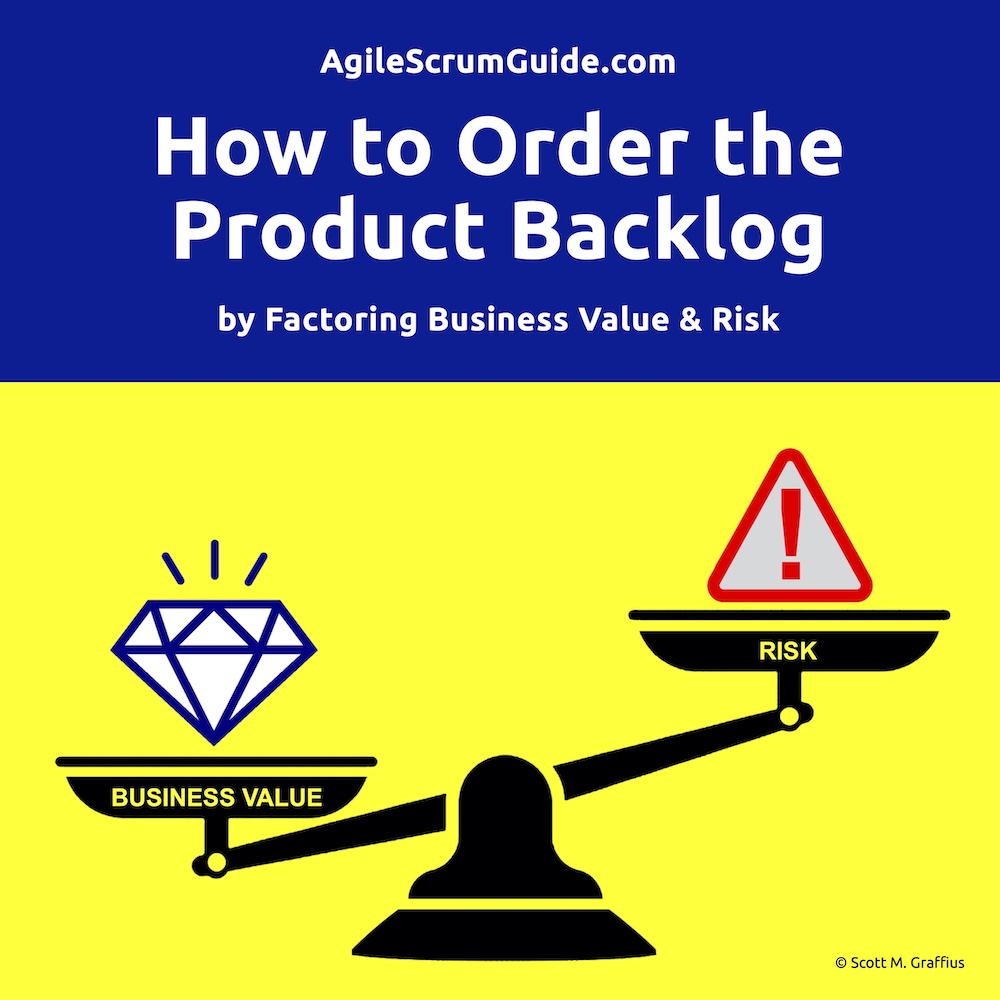
Each item in the product backlog would be rated as either high or low in two dimensions: business value and risk. It is suggested that high business value, high-risk items are worked on first. While that may seem counterintuitive, the earlier that work is done, the sooner the team will move to mitigate the issues and unknowns—leading to a higher quality product. If there's a failure, it will occur early and relatively inexpensively.
An ordering of priorities is illustrated above, and it follows:
1. High business value, high risk.
2. High business value, low risk.
3. Low business value, low risk.
4. Low business value, high risk.
Alternatively, other prioritization methods—such as the MoSCoW ranking model—may be used.
This content is an abridged excerpt from the award-winning book by Scott M. Graffius, Agile Scrum: Your Quick Start Guide with Step-by-Step Instructions.


About Scott M. Graffius

Scott M. Graffius, PMP, CSP-SM, CSP-PO, CSM, CSPO, SFE, ITIL, LSSGB has generated over one billion dollars of business value in aggregate for the organizations he has served. He is an agile project management practitioner, consultant, award-winning author, and international speaker. His expertise spans project, program, portfolio, and PMO leadership inclusive of agile, traditional, and hybrid approaches. Content from Scott's books (Agile Scrum: Your Quick Start Guide with Step-by-Step Instructions and Agile Transformation: A Brief Story of How an Entertainment Company Developed New Capabilities and Unlocked Business Agility to Thrive in an Era of Rapid Change), workshops, speaking engagements, and more have been featured and used by businesses, governments, and universities including Gartner, Microsoft, Oracle, Cisco, Ford, Qantas, Atlassian, Bayer, the National Academy of Sciences, the United States Department of Energy, the United States Army, the New Zealand Ministry of Education, Tufts University, Texas A&M University, Virginia Tech, Penn State, Warsaw University of Technology, University of Waterloo, Loughborough University London, and others. He has spoken at conferences and other events around the world, including Australia, Brazil (scheduled for September 1, 2021), Canada, Czech Republic, Finland, France, Germany, Greece, India, Ireland, Lithuania, Luxembourg, Netherlands, New Zealand, Sweden, United Kingdom, and the United States. Thinkers360 named Scott a global top thought leader and influencer in four domains: Agile, Change Management, Digital Transformation, and GovTech. His full bio is available at https://AgileScrumGuide.com.

About Agile Scrum: Your Quick Start Guide with Step-by-Step Instructions
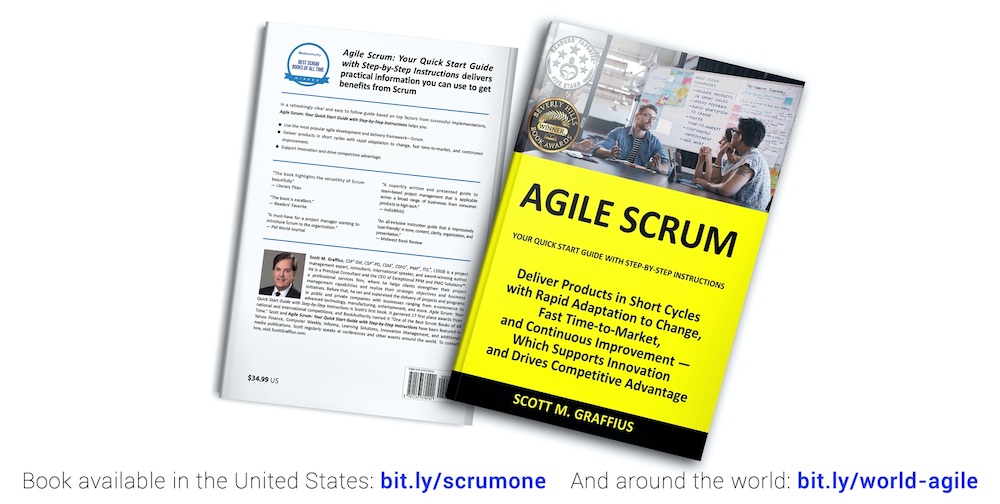
Shifting customer needs are common in today's marketplace. Businesses must be adaptive and responsive to change while delivering an exceptional customer experience to be competitive.
There are a variety of frameworks supporting the development of products and services, and most approaches fall into one of two broad categories: traditional or agile. Traditional practices such as waterfall engage sequential development, while agile involves iterative and incremental deliverables. Organizations are increasingly embracing agile to manage projects, and best meet their business needs of rapid response to change, fast delivery speed, and more.
With clear and easy to follow step-by-step instructions, Scott M. Graffius's award-winning Agile Scrum: Your Quick Start Guide with Step-by-Step Instructions helps the reader:
- Implement and use the most popular agile framework―Scrum;
- Deliver products in short cycles with rapid adaptation to change, fast time-to-market, and continuous improvement; and
- Support innovation and drive competitive advantage.
Hailed by Literary Titan as “the book highlights the versatility of Scrum beautifully.”
Winner of 17 first place awards.
Agile Scrum: Your Quick Start Guide with Step-by-Step Instructions is available in paperback and ebook/Kindle worldwide. Some links by country follow.
- 🇦🇺 Australia
- 🇦🇹 Austria
- 🇧🇪 Belgium
- 🇧🇷 Brazil
- 🇨🇦 Canada
- 🇨🇿 Czech Republic
- 🇩🇰 Denmark
- 🇫🇮 Finland
- 🇫🇷 France
- 🇩🇪 Germany
- 🇬🇷 Greece
- 🇭🇺 Hungary
- 🇮🇳 India
- 🇮🇪 Ireland
- 🇮🇱 Israel
- 🇮🇹 Italy
- 🇯🇵 Japan
- 🇱🇺 Luxembourg
- 🇲🇽 Mexico
- 🇳🇱 Netherlands
- 🇳🇿 New Zealand
- 🇳🇴 Norway
- 🇪🇸 Spain
- 🇸🇪 Sweden
- 🇨🇭 Switzerland
- 🇦🇪 UAE
- 🇬🇧 United Kingdom
- 🇺🇸 United States
- 🌏 More countries

About Agile Transformation: A Brief Story of How an Entertainment Company Developed New Capabilities and Unlocked Business Agility to Thrive in an Era of Rapid Change
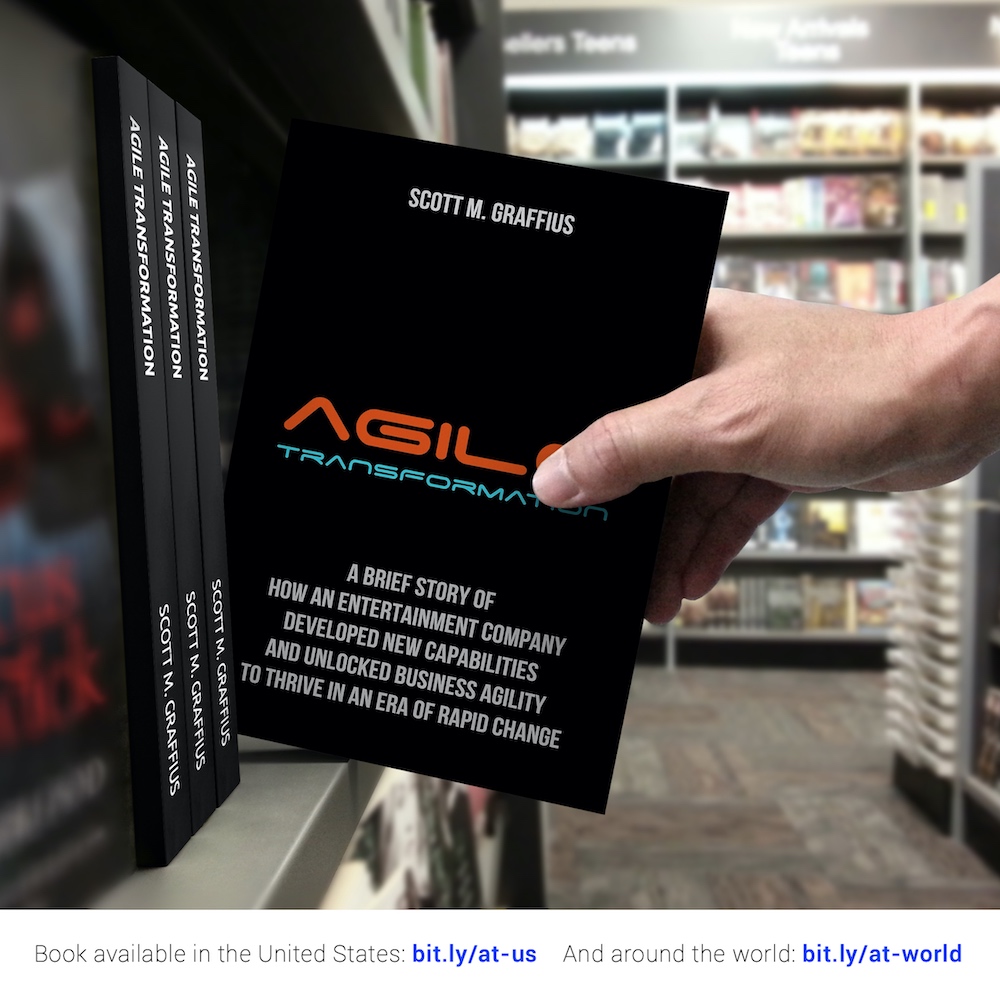
Thriving in today's marketplace frequently depends on making a transformation to become more agile. Those successful in the transition enjoy faster delivery speed and ROI, higher satisfaction, continuous improvement, and additional benefits.
Based on actual events, Agile Transformation: A Brief Story of How an Entertainment Company Developed New Capabilities and Unlocked Business Agility to Thrive in an Era of Rapid Change provides a quick (60-90 minute) read about a successful agile transformation at a multinational entertainment and media company, told from the author's perspective as an agile coach.
The award-winning book by Scott M. Graffius is available in paperback and ebook/Kindle worldwide. Some links by country follow.
- 🇦🇺 Australia
- 🇦🇹 Austria
- 🇧🇷 Brazil
- 🇨🇦 Canada
- 🇨🇿 Czech Republic
- 🇩🇰 Denmark
- 🇫🇮 Finland
- 🇫🇷 France
- 🇩🇪 Germany
- 🇬🇷 Greece
- 🇮🇳 India
- 🇮🇪 Ireland
- 🇯🇵 Japan
- 🇱🇺 Luxembourg
- 🇲🇽 Mexico
- 🇳🇱 Netherlands
- 🇳🇿 New Zealand
- 🇪🇸 Spain
- 🇸🇪 Sweden
- 🇨🇭 Switzerland
- 🇦🇪 United Arab Emirates
- 🇬🇧 United Kingdom
- 🇺🇸 United States
- 🌏 More countries

Let's Connect
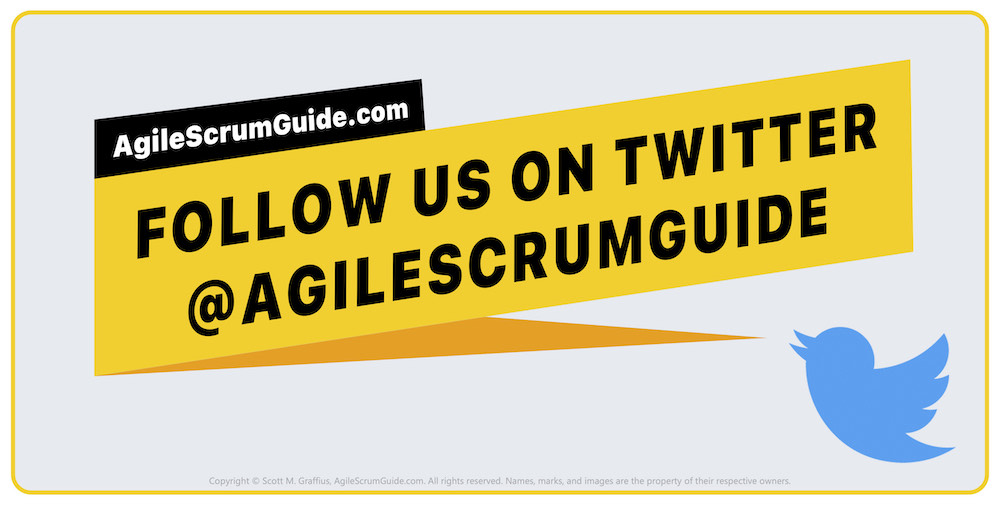
Connect with AgileScrumGuide.com on Facebook, Twitter, LinkedIn, Instagram, and Pinterest.
And connect with agile project management practitioner, consultant, award-winning author, and international speaker Scott M. Graffius on Twitter, Facebook, and LinkedIn.

The short URL for this article is: https://bit.ly/agile-pb
© Copyright 2021 Scott M. Graffius, AgileScrumGuide.com. All rights reserved. This material may not be published, broadcast, rewritten or redistributed without the express written permission of Scott M. Graffius/AgileScrumGuide.com.
